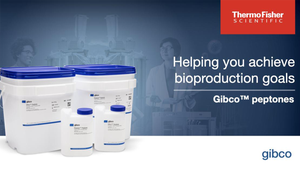 Carey Connelly, senior director, process development, Catalent.
Carey Connelly, senior director, process development, Catalent.
Carey Connelly works at Catalent’s Maryland gene therapy site in the University of Maryland’s BioPark location, which houses a center of excellence for process and analytical development. She spoke about the company’s integrated viral-vector platform to enhance speed to clinic. After introducing the company as a global and diversified contract development and manufacturing organization (CDMO), she focused on the biologics segment, now referred to as the biomodalities segment, encompassing cell, gene, protein, and mRNA therapies.
Connelly described Catalent’s network of clinical and commercial manufacturing facilities and fill–finish capabilities in the United States and Europe. She detailed activities at different sites in cell-line development, production of monoclonal antibodies (MAbs) and other recombinant proteins, cell and gene therapies, plasmid-DNA vector design, mRNA-based viral-vector design, and cell-based technologies. She noted that at its site in Düsseldorf, Germany, the company maintains good manufacturing practice (GMP) certified induced pluripotent stem cell (IPSC) banks and differentiation protocols enabling immune cell therapies, along with capabilities for generation of mesenchymal stem cells for exosome production.
Connelly focused her presentation on AAV technology housed in the Maryland facility, noting that Catalent’s clients benefit from integrated contracts and proposals, harmonized project management, a global development and manufacturing network, and diverse expertise. The UpTempo AAV platform enables the company to reduce timelines and deliver high-quality viral vectors rapidly and consistently. The fastest means of getting AAV products into humans is through use of transient and transfection-based processes based on three plasmids and the gene of interest (GoI) with the rescue transgene, helper, and functions to enable replication and provide structural and tissue specificity. By using UpTempo technology, the company has been able to focus on the most critical variables, supporting the platform through a standardized panel of in-house analytics. The platform is enhanced by an in-house HEK-293 cell line and off-the-shelf plasmids, including those for rep/cap genes and helpers for AAV production. Such off-the-shelf reagents ensure process reproducibility and accelerate development.
Connelly outlined key aspects and offerings of the platform process, beginning with its optimization of transfection across multiple serotypes, increasing both yield and quality. The downstream platform process matches industry capabilities: harvest, tangential-flow filtration (TFF), an intermediate freezing stage; then thawing for downstream processing, which includes an affinity capture chromatography step, anion-exchange polishing, viral filtration, and formulation. Prequalified in-house analytics can help reduce the timeline, as can in-house assays for residual impurities, capsid titer, purity, and aggregation. Analytical ultracentrifugation supports characterization efforts, although release testing and particle sizing are outsourced. Scripted protocols streamline timelines for assay qualification and verification of method suitability.
Documentation is streamlined as well. Customers agree on a standard set of variables. Those conditions are recorded into templated batch records for GMP production, also using established buffer SMPs and a preset sampling plan.
Catalent’s HEK-293 cell line began as an adherent cell line adapted to suspension culture conditions and banked for GMP use. The clone has been verified across many serotypes, including with Catalent’s internal vectors. Connelly showed data on its performance, which compares favorably with that of another commonly used commercial cell line for AAV production.
The company’s off-the-shelf plasmids include pHelper plasmids and a subset of the rep/cap genes. The company can make research- and GMP-grade plasmids and custom-design a clone of a client’s inverted terminal repeat plasmid containing the GoI. A master cell bank supports client GMP runs, and a research cell bank supports platform-fit evaluation during development.
Connelly described how new plasmids are tested and how master cell banks are generated, comparing the Catalent in-house HEK-293 line (with a rep/cap 5 plasmid, pHelper plasmid, and a reporter GoI) with two commonly used competitor sources for the rep/cap plasmid.
She concluded by outlining how her group confirmed the quality of its plasmids and their impact on the AAV produced, using data from production at 2 L for a near–full-length GoI, with a 4.1-kb transgene insert. By having enough research-grade plasmids in hand to support 200-L scale, Catalent can perform development, transfer, and GMP manufacturing to deliver a drug product within nine months.
Fill out the form below to view the full presentation now.






